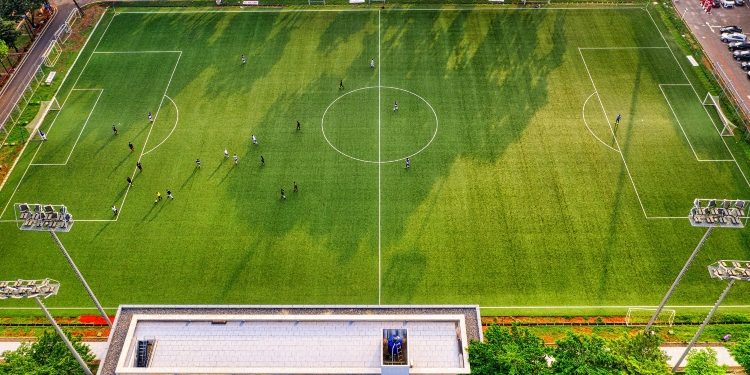Remember the days when marking sports fields required a handful of tools and hours of manual labor? Those times are becoming a tale of the past, thanks to the revolutionary line marking robot. Groundsmen around the world are watching traditional methods give way to precision, efficiency, and innovation. Marking sports fields is no longer just about drawing lines; it’s about accuracy, saving time, and reducing environmental impact. Let’s delve into how this technology is making a mark in the sports world.
The game-changing tech of GPS line marking
Gone are the days of wonky lines and unevenly marked fields. GPS technology has ushered in an era of unmatched precision in sports field layouts. Unlike traditional line marking methods, which were prone to human error and heavily dependent on manual efforts, GPS-guided robots can map out and execute field lines with astonishing accuracy. This isn’t just about drawing the perfect line—this technology ensures that sports fields meet professional standards every single time. From football pitches to rugby fields, precision line marking has become a game-changer for sports facilities worldwide.
Efficiency, time-saving, and eco-friendly
The adoption of GPS technology in line marking isn’t just a win for precision; it’s also a significant step forward in operational efficiency. Imagine reducing the time spent on marking a field from several hours to just a few minutes. This leap in efficiency allows sports facilities to save on labor costs and allocate their resources more effectively. Moreover, the precision of a line marking robot minimizes the overuse of marking materials, making this approach not only time-efficient but also environmentally friendly. It’s a win-win for sports facilities looking to optimize their operations while reducing their carbon footprint.
Looking ahead: The future of sports field design
As sports facilities worldwide continue to embrace GPS line marking technology, we’re standing on the brink of a new era for sports field design. The possibilities extend beyond just marking lines. GPS technology could serve as the backbone for designing more complex and creative field layouts, enhancing both the aesthetic appeal and the functionality of sports facilities. The future might also bring integration with other forms of sports tech, such as performance tracking systems, to provide a holistic technology ecosystem for sports management.
In conclusion, the utility of a line marking robot powered by GPS technology is transforming the landscape of sports fields. It’s not just about the lines on the field; it’s about the broader implications for efficiency, environmental sustainability, and future innovation in sports management. As more facilities adopt this technology, the standards for sports field layouts are being redefined, marking a significant leap forward for the industry.
David Prior
David Prior is the editor of Today News, responsible for the overall editorial strategy. He is an NCTJ-qualified journalist with over 20 years’ experience, and is also editor of the award-winning hyperlocal news title Altrincham Today. His LinkedIn profile is here.














































































